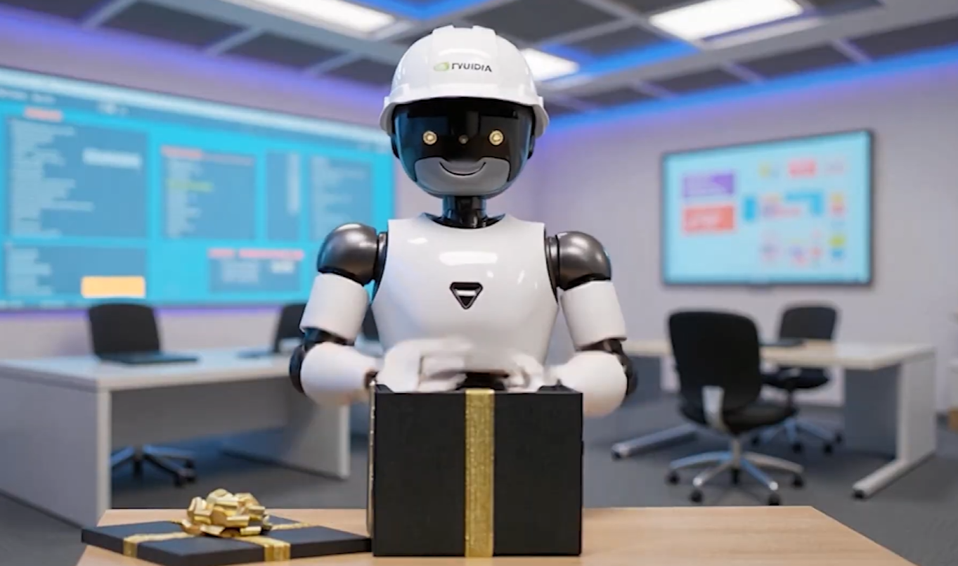The robotics industry is undergoing a transformative shift, and Nvidia is once again positioning itself at the center of this evolution. With the launch of the Nvidia Jetson AGX Thor, powered by the new Blackwell architecture, the company is setting a new benchmark for robotics development and artificial intelligence at the edge. As industries demand more efficient, intelligent, and autonomous systems, this development kit could become a game changer for developers, researchers, and enterprises seeking scalable AI-driven solutions.
The Power Behind Nvidia Jetson AGX Thor
The newly introduced Nvidia Jetson AGX Thor is not just another development kit. It is designed to push the boundaries of edge AI and robotics by leveraging the advanced Blackwell GPU architecture. Blackwell is the successor to Hopper and is engineered for high efficiency, enabling performance improvements that are crucial in robotics where real-time data processing is non-negotiable.
This dev kit integrates the Blackwell-based GPU with AI acceleration, sensor fusion, and real-time processing capabilities. With these features, robots can interpret their environment more accurately, make smarter decisions, and interact with humans and surroundings more effectively.
Compared to previous Jetson platforms, the Nvidia Jetson AGX Thor delivers significant leaps in computing performance per watt, a critical metric for robotics developers. The balance of power efficiency and computational muscle makes it a standout tool for next-generation robotics applications, from autonomous vehicles and drones to industrial automation and healthcare robots.
Why Nvidia Jetson AGX Thor Matters for Robotics
Robotics is increasingly becoming central to multiple industries. Manufacturing, logistics, agriculture, and even healthcare are turning to robotic systems to boost productivity, enhance safety, and cut costs. However, these applications demand far more than basic automation. They require intelligent systems capable of learning, adapting, and functioning autonomously in complex environments.
The Nvidia Jetson AGX Thor addresses this need by providing an AI-ready platform that combines deep learning, computer vision, and advanced simulation. For developers, this means reduced development cycles and the ability to deploy cutting-edge robotics applications faster. For businesses, it means robots that are more reliable, cost-effective, and scalable.
The kit also supports Nvidia’s software ecosystem, including CUDA, TensorRT, and ROS (Robot Operating System). This compatibility makes it easier for developers already familiar with Nvidia’s ecosystem to transition their work onto the new hardware while benefiting from higher performance and greater flexibility.
Impact on AI and Edge Computing
The implications of the Nvidia Jetson AGX Thor go beyond robotics. As AI becomes integral to industries, edge computing is growing in importance. Edge devices, unlike centralized data centers, must process data locally to reduce latency and improve responsiveness.
The Blackwell-powered Jetson AGX Thor makes edge AI more feasible and more powerful. It allows real-time decision-making in scenarios where every millisecond counts, such as autonomous driving, industrial robotics, and drone operations. By processing data locally, companies also gain an edge in data privacy and security, since sensitive information does not always need to be transmitted to centralized servers.
This shift toward edge AI highlights Nvidia’s broader vision of distributed intelligence, where smart devices powered by platforms like the Jetson AGX Thor work seamlessly to transform industries.
Transforming Industries with Nvidia Jetson AGX Thor
The real-world applications of the Nvidia Jetson AGX Thor are wide-ranging:
- Manufacturing: Intelligent robotic arms powered by this kit can detect defects in real time, optimize assembly processes, and ensure quality control.
- Healthcare: Autonomous medical robots could provide assistance in hospitals, reduce repetitive workloads, and deliver personalized patient care.
- Agriculture: Smart robots can monitor crops, optimize irrigation, and enhance yields by analyzing data directly in the field.
- Logistics: Warehouses and distribution centers can deploy robots that navigate dynamically, improving efficiency and safety.
- Autonomous Mobility: From self-driving cars to drones, Nvidia’s platform supports systems that require fast decision-making in complex environments.
These applications are not distant possibilities but are becoming tangible realities as robotics and AI converge. The Nvidia Jetson AGX Thor is central to accelerating this convergence.
The Competitive Landscape and Nvidia’s Advantage
The robotics hardware market is becoming increasingly competitive, with several companies introducing their own AI development platforms. However, Nvidia continues to hold a significant advantage thanks to its robust ecosystem, deep expertise in AI acceleration, and ability to deliver consistent innovations in both software and hardware.
While competitors may offer strong hardware, the integration of the Blackwell architecture into the Nvidia Jetson AGX Thor, combined with compatibility with existing Nvidia AI frameworks, provides a compelling value proposition. This synergy enables Nvidia to maintain a leadership position as robotics developers choose platforms that are not only powerful but also easy to adopt.
Looking Ahead: The Future of Robotics with Nvidia Jetson AGX Thor
The introduction of the Nvidia Jetson AGX Thor is a glimpse into the future of robotics. As industries continue to push for automation and intelligent systems, the demand for platforms that enable faster, safer, and more capable robotics will grow exponentially.
We are moving toward an era where robots are not just assistants but full collaborators. From helping surgeons in operating rooms to optimizing production lines, the role of robotics will expand dramatically. With its powerful hardware and rich software ecosystem, the Jetson AGX Thor is positioned to be at the heart of this transformation.
Nvidia’s long-term commitment to AI research and development also ensures that the Jetson platform will continue to evolve, supporting even more advanced applications in the years to come.
Read More






 Friday, 05-12-25
Friday, 05-12-25







